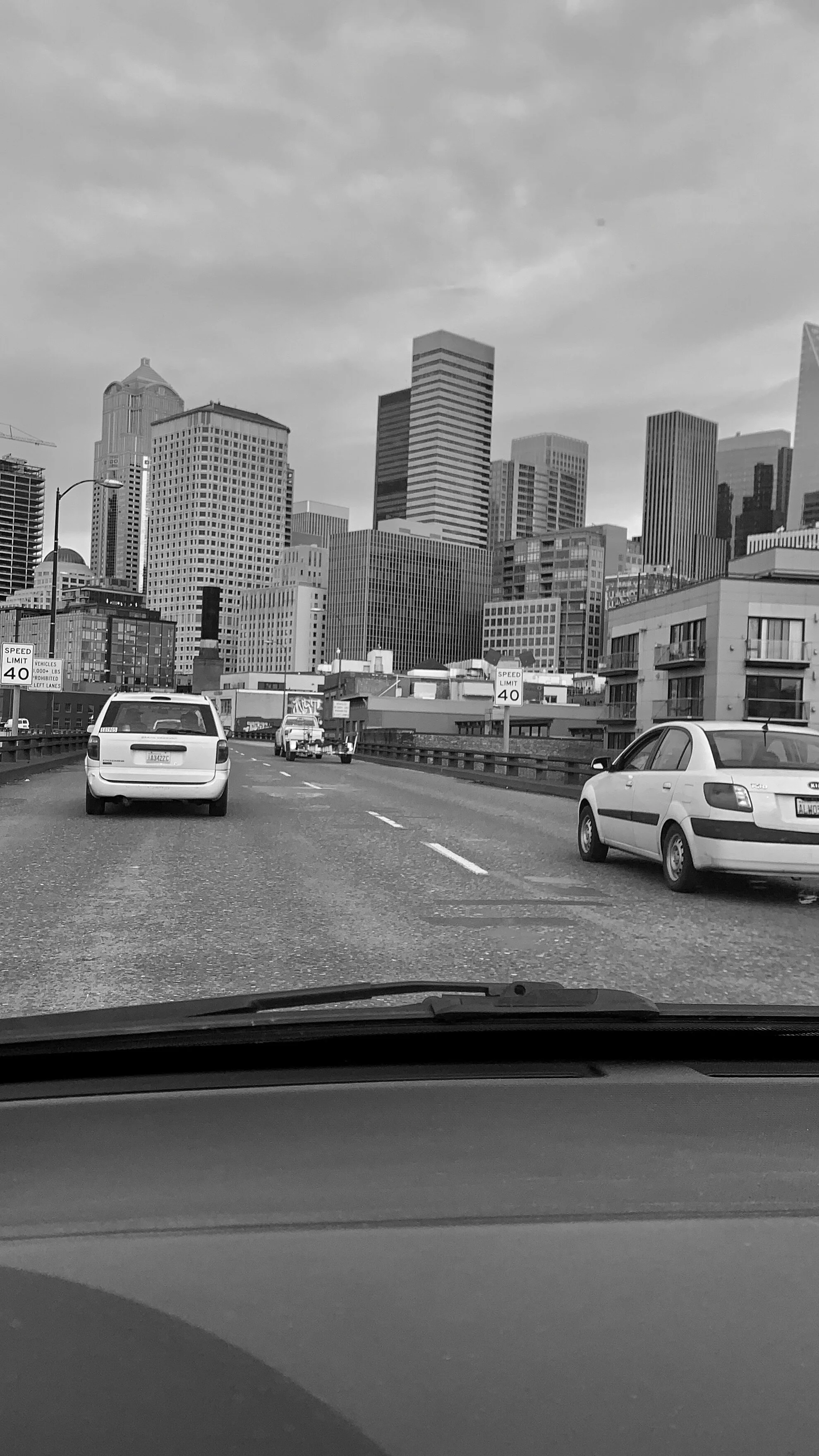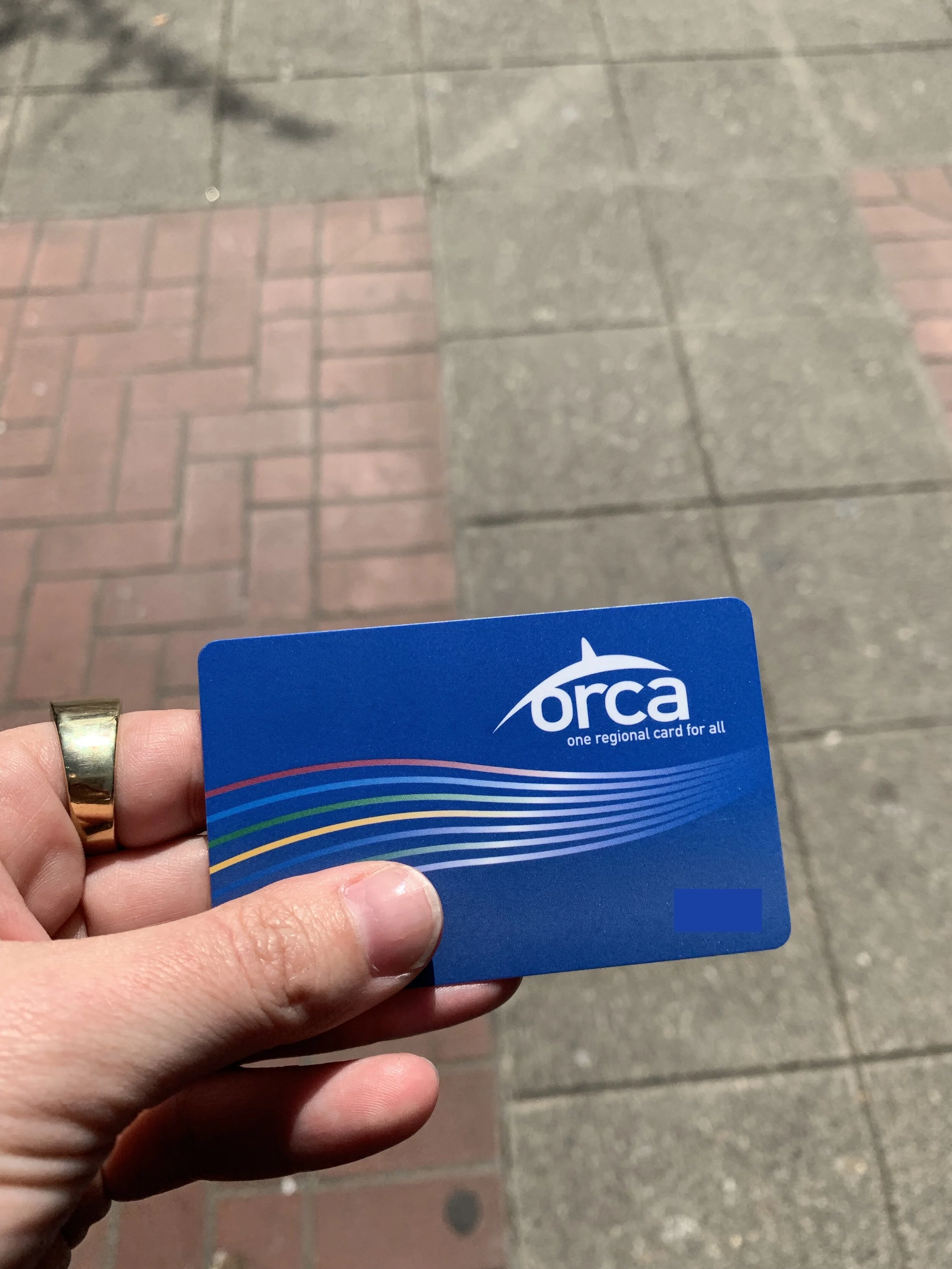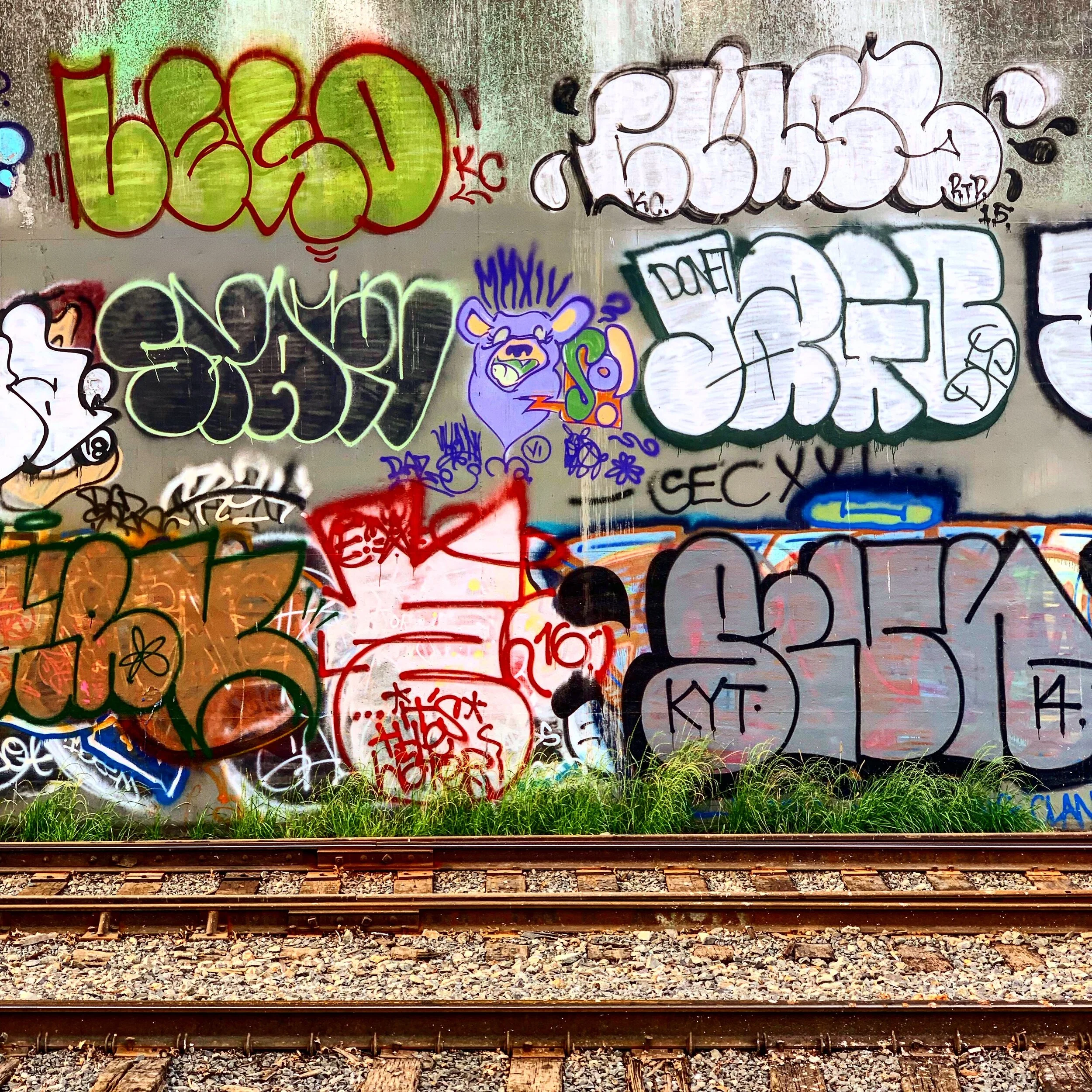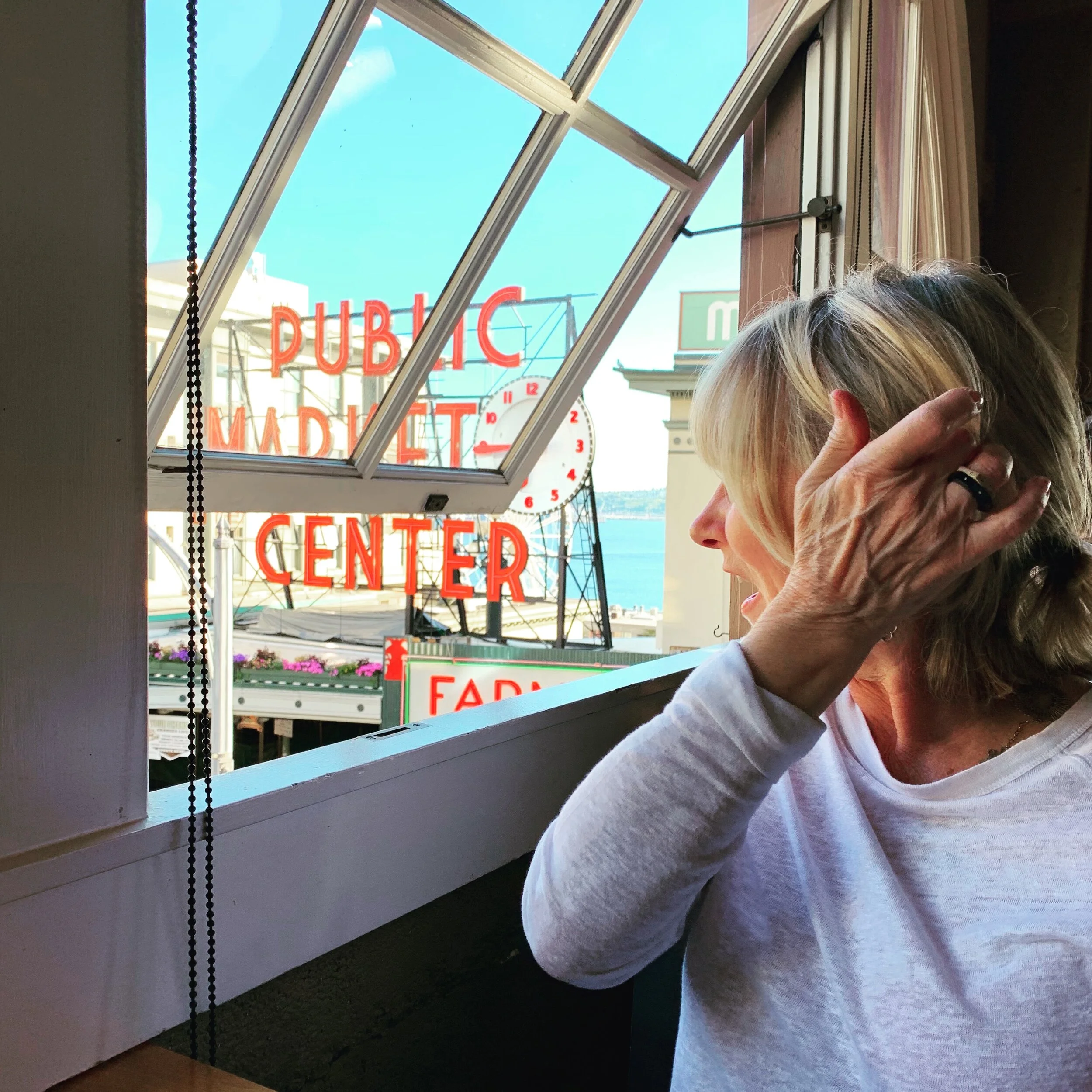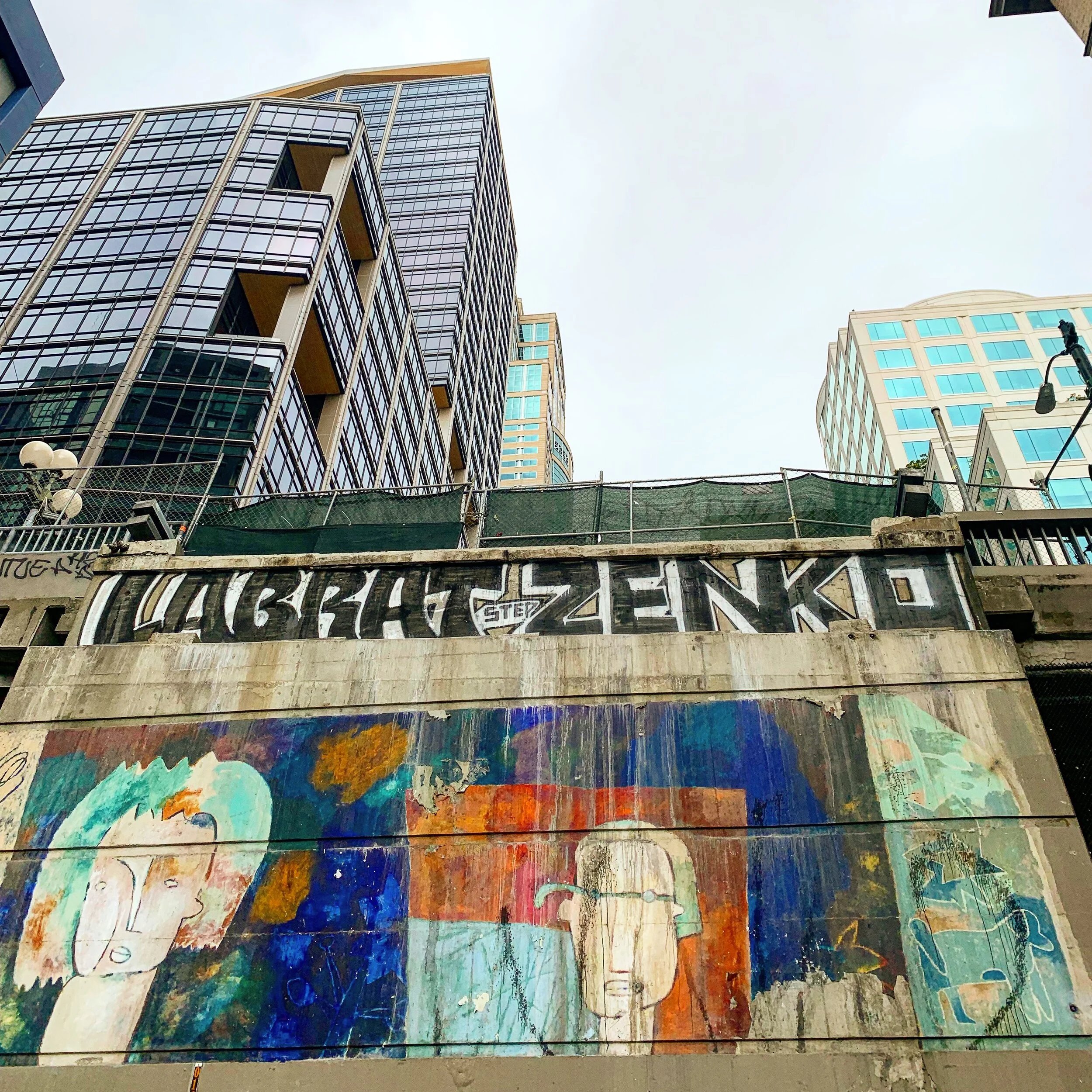Measuring Normal
For three and a half years I drove an hour to and from work. That is nearly twenty-two days of driving every year. It wasn’t all that bad. When I wasn’t listening to The King Killer Chronicles audiobook on repeat I talked to my stepdad about my team and corporate management. In the summer, I would put my windows down and turn up my Spotify playlists. When it rained, it was sometimes nice to just cruise in silence. I was even still driving during those final days of the viaduct, and I, too, made a Last Drive video before it would be shut down forever. But mostly, the drive was a drain on my mind and day, and the coping mechanisms I created to deal with it didn’t always alleviate the countless empty hours of commute.
When I made the shift in careers, I still needed to get around. A combination of high gas prices as well as my environmentally conscious Seattle mind, I decided that I wanted to make use of public transportation. This did require getting over some mass transit PTSD. My only experience using buses up to that point was minimal and each experience came with a story of being yelled at, yes yelled at, by a bus driver for simply being naive about how the system worked. Apparently some drivers don’t have the patience for the quick tug on the stop request cord just after leaving a stop to indicate the next stop was requested. Which was something that I had seen literally every other passenger do, so Monkey See Monkey Do. Other drivers are triggered by people staring at a bus route map while at their stop. To be fair, the latter situation was in Chicago, and while he was probably just being helpful, he did technically yell at me. Additionally, if I can get lost, I almost always will. I create habitual routes for this very reason. And while the habits provide me with a necessary level of comfort, establishing those routes takes trial and error, and I’m not always so calm, cool and collected about the errors. Combine these less than desirable interactions with bus drivers and my aptitude for directional depravity to the fact that my forehead has a giant sign tattooed on it inviting any and all persons to interact with me despite my intense introversion and you begin to see why getting used to buses came with mental hurdles.
Yet, Seattle has almost 300 bus routes connecting Edmonds to Tacoma and an additional light rail link system that makes a trip from downtown to university roughly twenty minutes; a commute that could take up to three times that duration in peak traffic. Seattle simplifies bus fare with the use of the Orca card: similar to a debit card that can be loaded with unlimited usage or dollar value depending on your needs for easy scanning when entering a bus. Multiple apps make routing to a destination, with arrival and departure times, as simple as walking out your front door. To top it off, I live a quick five blocks from a major bus depot on the north end of the city. It isn’t an ideal system, nor nearly as efficient as the subway in New York, but it definitely provides a network of transportation for the average Seattleite.
I wanted in on this travel accessibility. So I got my Orca card, put money on it, and forced myself to use it. And I fell in love. I fell in love with the walk to the depot. I fell in love with picking out a seat and putting my headphones in. The soft, and sometimes not so soft, rumble of the bus over Seattle streets. I fell in love with all of the diverse peoples I saw on the bus every day. I fell in love with the hours to myself listening to music or reading a book and occasionally helping out strangers. Busing goes hand in hand with walking, and when you walk you notice so much more; you find opportunities to stop and smell the street art roses. Using mass transportation I was able to go to Ballard, University, Capital Hill, and Downtown all in the same day and never once worry about traffic or parking. I didn’t have to feel uneasy about having drinks with friends knowing I had to drive at some point. My partner and I took trips into the city on the weekends, my aunt and I met for dinners and movies. I even got Orca cards for visiting family members and we took trips to Mariner’s games and Discovery Park.
The last bus trip I took was to and from the university to attend my last editing class at the beginning of February 2020. By mid-month, I was sick. And by the time I recovered, nearly all of Seattle was staying home and social distancing. By the time I even saw another bus, they were displaying an “Essential Trips Only” message on the route screens.
Five months have passed since my last bus ride and it feels like we are now in this miasma of uncertainty. Things are soft opening while confirmed COVID-19 cases increase. Most people I see wear their mask and go about their day while I read about other people fake coughing, mocking, and “bahh”-ing at mask wearers while at the grocery store. As though those of us who choose to help mitigate the spread of a virus are just sheep led to submission. While I’ve recently had a beer out in public in the last few weeks, the thought of sitting in a restaurant right now makes me feel uncomfortable. Half the time I can’t tell if I’m overreacting or erring on the side of caution. But I know for certain that if I was the root cause for a family member to be hospitalized, I could not live with that. And I think it would be irresponsible for me to not take this at least moderately seriously when I interact with complications of my own autoimmune disease daily.
But I’m exhausted. I’m sick of the social media battleground regarding mask wearing. I don’t want to hear about confirmed cases exponentially increasing. I groan when I hear that California has shut back down. Will Washington follow?
It’s not that I don’t agree with the measures.
It’s just that I miss the bus.
I’ve been asking friends and loved ones what they feel is a measure of normal they are looking for. It’s hard to find the right words to ask this question because the impact of this pandemic has exposed shortcomings in our country. And with so many people currently experiencing a surplus of time, engagement in racial injustice has been profound; a true civil rights movement in my own lifetime. So, normal feels like a weak word inappropriately ascribed to a definitive moment in the development of our country. Maybe we shouldn’t return to the normal of December 31st, 2019.
When I do manage to get my question out into the ether, the responses echo each other. Many people talk about masks and not wanting to have to wear them forever. That going out in public, doing the things they love with a mask on just isn’t the same. Visiting family. Traveling. Rescheduling cancelled events. These examples of normal are shared throughout our communities. We are craving each other and are in need of the communal experiences that make up our lives.
Many responses to the “normal” question are wonderfully specific. I have one friend who, as a UPS driver, has seen routing increase with the demand for at home delivery of essentials as well as the results of retail therapy binging. He’ll feel like life is returning to normal when that slows down. Another friend is a teacher and looks forward to the day she can be in groups larger than five without having to wear protective gear. For yet another friend, the normal is as simple as being able to go to a thrift shop and walk around. She admits that this normal has already occurred for her and that she almost feels guilty about it.
For me, I eagerly await the day that I can head out my door and hop the 346 to the Northgate transit center. I’ll even gladly wear a mask if it means sixty minutes of a jostling around in my seat, surrounded by strangers headed in a common direction. As I sit at a stoplight, back in my car, listening to audiobooks and doing my best to ignore the anxiety that driving causes me, I peek at the buses on the road. Is today the day that the route number and destination are the only messages in dull digital orange readout? Have the gods of mass transit seen fit to give back this gift of connectivity and travel?
Not yet, they say. Not yet.
